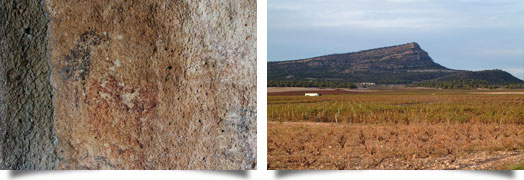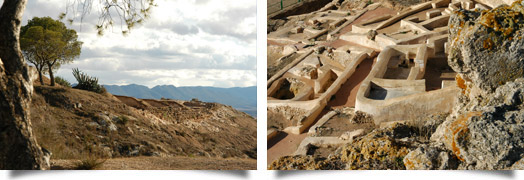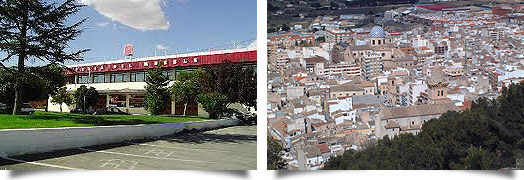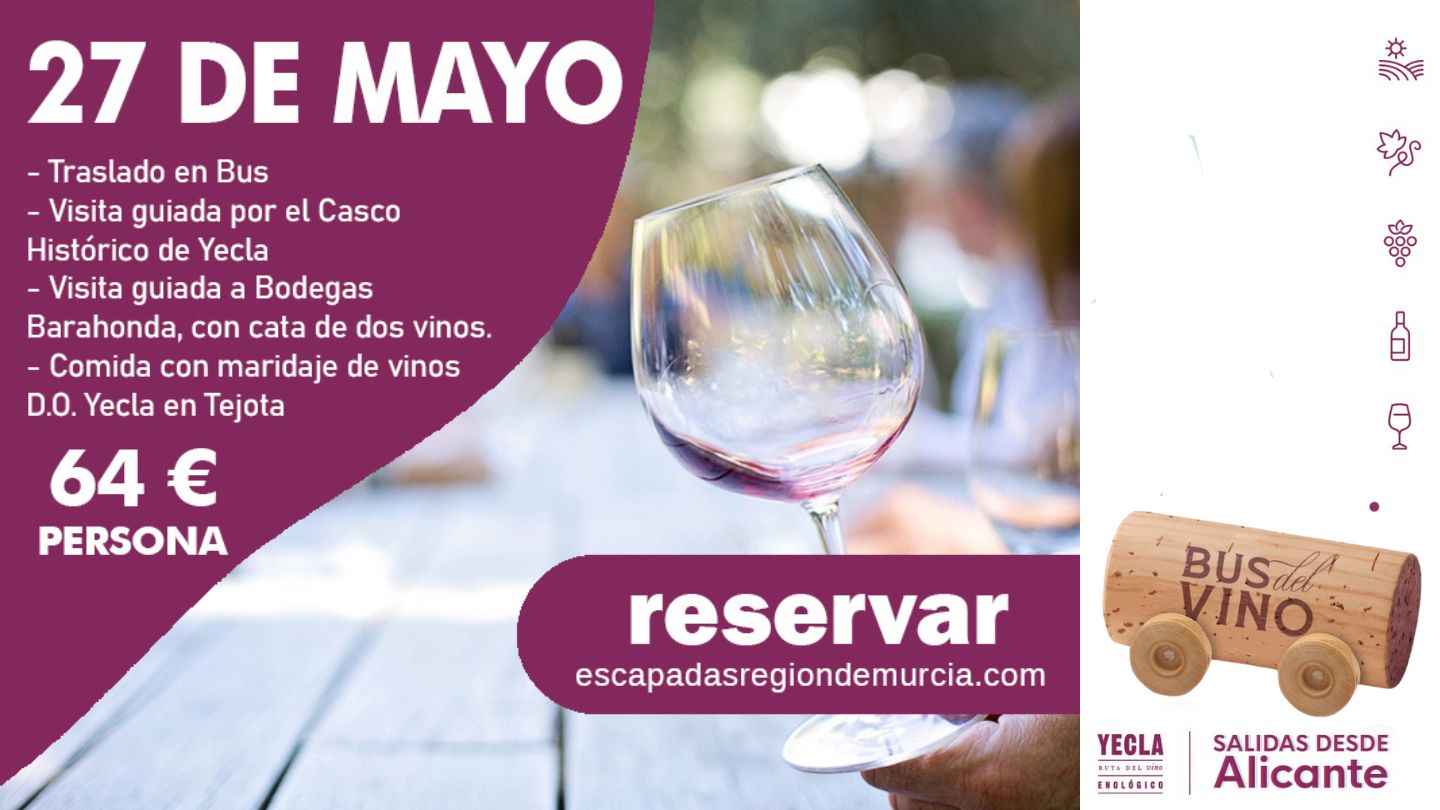
HISTORY
The first remains of human activity are located in the Main Fountain of Villa where useful flint carvings have been found that place us in the Upper Paleolithic ( 30,000 BC ).
The first traces of agricultural societies lead us to the site of the Cueva de los Secos, but it is undoubtedly the Arabian Mountain and its cave paintings the greatest exponent of human activity between the 6th and the 2nd millennium BC . The shelters of Cantos de la Visera and the Cueva del Mediodía, next to the fortified village of El Arabilejo, dating from the Bronze Age (II millennium BC) and the rock engraving fields (cazoletas) associated with this town, constitute a prehistoric complex of the first magnitude in the area of Levante Peninsular.
From the Eneolithic or Chalcolithic (III millennium BC) we have the sites of Las Atalayas, Sierra del Cuchillo, La Ceja and La Balsa. From the Bronze Age (II millennium BC) remains have been located in the Arabilejo, Pulpillo, Umbria del Factor, Monte Felipe, Moratillas, Magdalena, Cerro de la Campana, El Serral, El Castellar, Los Roncones and La Chimenea.
From Roman times we have the site of Los Torrejones , which constituted, between the 1st century BC to the 5th century AD, the administrative center of a wide region.
The city of Yecla , as a stable settlement in the place it now occupies, was established at the end of the 11th century with the fall of the Caliphate and the establishment of Taifa kingdoms. The «hisn» or castle is built, and a small population nucleus is created in the shelter of its defenses, known by the Arabic written sources with the name of Yakka that, with the period of Almohad dominion, will acquire certain specific weight in the concert regional and regional.

With the Castilian conquest in the mid-thirteenth century , a new population center was established on the northern slope of the hill . The then Prince Alfonso X El Sabio occupies the square in 1243, later joining the dominion of D. Manuel and later as the town of Marquesado de Villena of D. Juan Manuel, experiencing the first demographic and urban expansion in Christian times.
Until the middle of s.XV the town will experience a sustained growth , reaching an extraordinary economic development under the protection of its customs, which will lead to an extraordinary demographic and urban increase during the reigns of Carlos V and Felipe II. (century XVI).
The seventeenth century is for Yecla, a century of continuous recession in all orders, caused by wars, epidemics, plagues, emigration, etc.
The s.XVIII marked a new era of splendor with deforestation, colonization and conquest for the cultivation of most of their land, with a new demographic development (reaching 10,000 inhabitants) and urban planning , tracing wide and straight streets, and building mansions with noble shields on their facades.
In the second half of the nineteenth century, Yecla underwent a new expansion, consolidating its agricultural and wine-growing character, for which it was known exclusively until very recently. It will be in the last quarter of this century when there is a first industrial development with the emergence of the alcohol industry.
In the mid-twenties (twentieth century) , there is a second impulse towards the industrialization of Yecla , due to the progressive abandonment of the artisanal activity of coopers and carpenters who will become furniture manufacturers. In the fifties and sixties what we can consider a first takeoff of the furniture industry , whose origin will be in the creation of the Cooperativa Obrera del Mueble "Esteban Díaz" and the subsequent creation of the Furniture Fair , first of the sector that is organized in Spain.

Despite its modern physiognomy, Yecla has not lost its taste of a welcoming and welcoming city, contrasting its medieval neighborhood with winding streets, steep slopes and secluded corners, with the modern zone of geometric design and stately layout.




